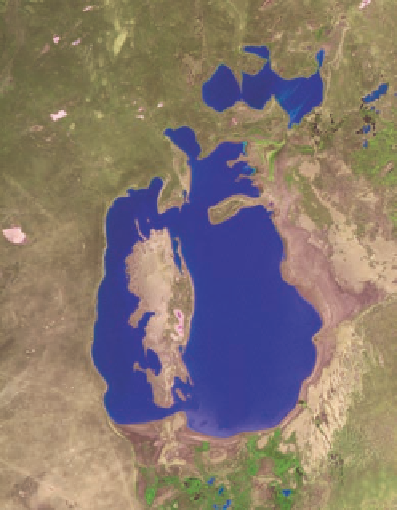Environmental Engineering Reference
In-Depth Information
Figure 11-11
Natural capital degradation:
the
Aral Sea
was once the world's fourth largest freshwater lake.
Since 1960, it has been shrinking and getting saltier because most of the water from the rivers that replenish it
has been diverted to grow cotton and food crops. These satellite photos show the sea in 1976 and in 1997. As
the lake shrinks, it leaves behind a salty desert, economic ruin, increasing health problems, and severe ecolog-
ical disruption.
gerous levels in the groundwater—the source of most
of the region's drinking water.
Shrinkage of the Aral Sea has altered the area's cli-
mate. The once-huge sea acted as a thermal buffer that
moderated the heat of summer and the extreme cold of
winter. Now there is less rain, summers are hotter and
drier, winters are colder, and the growing season is
shorter. The combination of such climate change and
severe salinization has reduced crop yields by 20-50%
on almost one-third of the area's cropland.
Finally, many of the 58 million people living in the
Aral Sea's watershed have experienced increasing
health problems from a combination of toxic dust, salt,
and contaminated water.
Can the Aral Sea be saved, and can the area's seri-
ous ecological and human health problems be re-
versed? Since 1999, the United Nations and the World
Bank have spent about $600 million to purify drinking
water and upgrade irrigation and drainage systems,
which improves irrigation efficiency and flushes salts
from croplands. In addition, some artificial wetlands
and lakes have been constructed to help restore
aquatic vegetation, wildlife, and fisheries.
The five countries surrounding the lake and its
two feeder rivers have worked to improve irrigation
efficiency and to partially replace crops such as rice
and cotton, which have high water requirements,
with other crops requiring less irrigation water. As a
result, the total annual volume of water in the Aral
Sea basin has stabilized. Nevertheless, experts expect
the largest portion of the Aral Sea to the south to con-
tinue shrinking.
Figure 11-12
Natural and economic capital degradation:
as the Aral Sea shrank it left ships stranded in a newly formed
desert.





